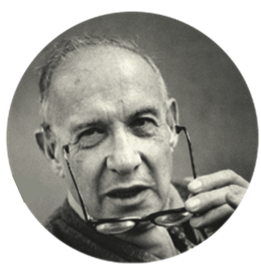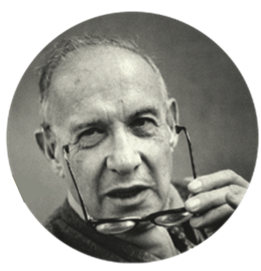Become a Change Leading Organization
Learning Objectives
After completing this unit, you’ll be able to:
- Describe the best practices of change leading organizations.
- Use a diagnostic tool to identify the strengths and weakness of your organization’s change leadership best practices.
Adopt Best Practices of Change-Leading Organizations

|
“…every organization has to build the management of change into its very structure.”
—Peter F. Drucker |
|---|
Let’s look at six best practices that can help guide efforts to transform our organizations into change leaders:
1. Develop a Compelling Vision
Change-leading organizations craft a vision of the future that both customers and their workforce find compelling. A well-crafted vision describes the purpose of the organization and paints a vivid description of what the organization aspires to become to help customers succeed. A well-crafted vision statement can galvanize and inspire the workforce to create the future.
For example, Salesforce was founded on the idea of creating a new kind of company. It was built on a pay-as-you-go business model focused on customer success and an integrated corporate philanthropy model. This vision has helped the company become the global leader in CRM, while also setting an example for other organizations.
2. Commit to Innovation
In his books, Peter Drucker emphasized the need to systematically innovate products and services to help customers succeed. Innovation applies to other aspects of the business as well—such as operational processes and business models. Despite the amount of attention they get in the popular press, transformative and truly disruptive innovations are relatively rare. In fact, many executives aim for a series of small, incremental innovations that help customers and lead to big gains.
For example, almost every year car companies come out with incremental model updates—such as more ergonomic dashboards or better seats. Then, every 5 to 10 years or so, the entire car is redesigned. Car companies have been doing this for years. However, transformation appears to be coming with self-driving cars—revolutionizing the way we commute. Just be careful with that “autopilot” feature while they’re figuring it out!
3. Focus on Customers and the Market
Organizations that are customer- and market-driven focus on customers, while maintaining a strong external focus on the broader market. They generate intelligence, analyze and disseminate this intelligence, and then act accordingly. They detect early signs of change, predict change, and even drive change. Detecting changes in customers and the broader market helps improve decision making across the organization, such as informing innovation initiatives.
Examples of this include advancements in analytics and artificial intelligence, and the increasing interconnectedness of smart devices. All have profound implications for the way customers and organizations do business in the future. Change leaders across industries are working to exploit these changes to create competitive advantage. Hopefully, your organization is too.
4. Dynamically Manage Organizational Capabilities and Resources
A substantial amount of research connects innovation and organizational performance to the organization’s ability to intentionally create, extend, modify, and utilize resources to generate competitive advantage. Resources are things such as capital, materials, and equipment, but also include data, information, people, and knowledge.
|
“The enterprise, by definition, must be capable of producing more or better than all the resources that comprise it.”
—Peter F. Drucker |
|
|---|
Organizations using Salesforce CRM solutions are examples of using resources and capabilities. These systems help us use customer data in ways that generate value through process improvements—ultimately improving the results from our marketing, sales, and customer service teams. Organizations rely on CRM systems to build individual and organizational knowledge, and to make better decisions.
5. Practice Abandonment
Change leaders practice what Drucker referred to as abandonment. This is the process of freeing up resources to lead change, rather than activities that no longer contribute to organizational success. Abandonment involves challenging just about everything the organization is doing to determine if it’s still worth doing. Asking, “If we were not in it already, would we be going into it now?”
This is pretty much what IBM did when it sold its PC and laptop business to Lenovo. Although IBM had been synonymous with PCs and laptops, it determined that its future lay elsewhere. That hanging on to its PC and laptop business would not benefit the direction of the company. The transformation wasn’t easy for IBM, but it appears to be paying off.
6. Create a Culture of Change
Change leaders develop organizational cultures that seek out and embrace change through innovation and transformation. Culture is often viewed as a source of competitive advantage because, unlike products and services, it can be extremely difficult to copy. High-performance cultures encourage collaboration and motivate people in healthy ways to lead change. And change leaders attract, acquire, and develop talent that fits their organizational culture.
|
“Culture eats strategy for breakfast.”
—Peter F. Drucker |
|---|
DIY Time! Assess Your Organization’s Change Leadership

Step 1—Take the Organizational Change Diagnostic Test
Take a few minutes to complete the diagnostic tool. Answer each question with one of the three choices—Not like us at all, Sort of like us, or Very much like us. Some of the questions are harder to answer than they look! Keep a tally of your scores for each question—step two examines the totals and what they can mean for your organization.
How much is your organization like the following? |
Not like us at all |
Sort of like us |
Very much like us |
|---|---|---|---|
We have a vision for the future that our customers and workforce find compelling. |
0 |
3 |
5 |
We consistently innovate solutions that our customers love. |
0 |
3 |
5 |
We are customer- and market-driven. |
0 |
3 |
5 |
We manage in two time periods (we’re ambidextrous). |
0 |
3 |
5 |
We develop our resources and capabilities. |
0 |
3 |
5 |
We practice abandonment. |
0 |
3 |
5 |
We have a culture that seeks out and embraces change. |
0 |
3 |
5 |
We are good at implementing changes throughout the organization. |
0 |
3 |
5 |
Step 2—Score Your Organization
Add up your scores and see where your organization fits within the spectrum of change leadership.
Your total score |
Your category |
What this means |
|---|---|---|
32–40 |
Awesome! |
You are best in class! Keep up the great work. Next steps: Are you as good as your competitors? |
16–31 |
Mediocre? |
Some things are going well and others not so much. Next steps: Take a look your low-scoring areas to come up with initiatives for improvement. |
0–15 |
Uh-Oh! |
Unless the organization is in an extremely stable and unchanging market, you likely have a lot of work ahead. Next steps: A good place to start is to work with your manager to examine your organization’s vision for the future (see the resource section for help crafting a vision). |
Step 3—Take Action
How did your organization do? If it didn’t score very well, don’t worry. Take the opportunity to sit down with your manager one-on-one to discuss your results and reasoning for answering the way you did, and get their thoughts on it. The conversation can yield insights that can help you get an even deeper understanding of your organization, and how you might be able to help!
Summary
In this unit, we looked at the best practices of change leading organizations, and used a DIY tool to find opportunities in our own organization. In the next unit, we dive into how to manage organizations through the change process—sounds like fun!


